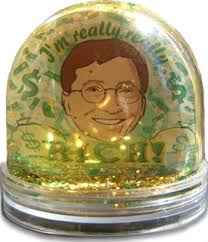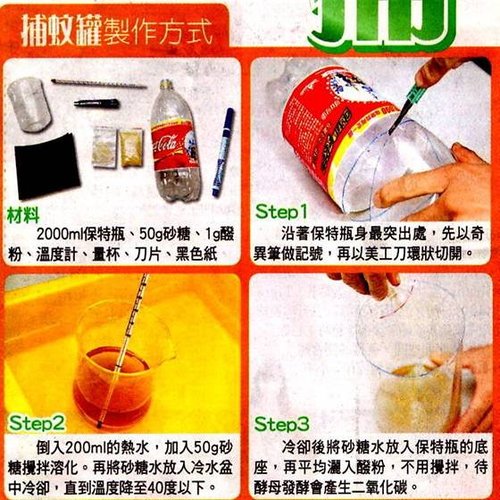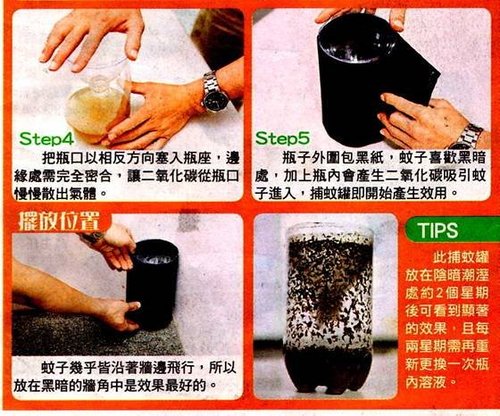简介
无机粉体环保石头纸(简称石头纸)是以储量大、分布广的石灰石矿产资源为主要原材料(碳酸钙含量为70~80%),以高分子聚合物为基材原料 (含量为20~30%),利用高分子界面化学原理和高分子改性的特点,经特殊工艺处理后,采用聚合物挤出、吹制成型工艺制成。无机粉体环保石头纸产品具有 与植物纤维纸张同样的书写性和印刷性效果。同时更具有塑料包装物所具有的核心性能。技术简介
石头纸新技术,是以地壳内最为丰富的矿产资源碳酸钙为主要原料,以高分子材料及多种无机 物为辅助原料,利用高分子界面化学原理和填充改性技术,经特殊工艺加工而成的一种可逆性循环利用,具有现代技术特点的新型造纸技术。石头纸技术,是国内领 先世界先进的新技术。该技术的诞生,既解决了传统造纸污染给环境带来的危害问题,又解决了大量塑料包装物的使用造成的白色污染及大量石油资源浪费的问题。
生产过程
提取石灰石中的碳酸钙,然后将矿石磨成高钙1500-2500目的超细粉,随后进行 第二道工序,将85%改性碳酸钙添加上15%的添加剂制成母粒,最后通过挤压吹膜设备制成纸或袋。
石头纸-由来和发展
特性
地球卫士石头纸技术在整个生产过程无需用水,不需要添加强酸、强碱、漂白粉及众多有机氯化物,比传 统造纸工艺省去了蒸煮、洗涤、漂白等几个重要的污染环节,从根本上杜绝了造纸过程中因产生“三废”而造成的污染问题。同时由于以价格低廉的矿石粉为主要原 材料,成本比传统纸张低20%-30%,价格也低10%-20%。 用石头做成的纸,外观看起来没什麼特别,但写上字泡在水里,十分钟后拿出来,用手抹,字不但不会晕开,把水擦干照样可以写字。如果同时燃烧石头纸和一般的 纸,一般纸一下子就烧完了,但石头纸的火却慢慢变小,最后熄灭。
石科纸张的发展于纸张特性上包括了安全性、物理性以及其他特性,而主要特 色是石科纸不仅防水、防雾、防油、防虫等,且在物理特性上于耐撕、耐折性上皆较木浆纸优胜。 石科纸吸墨牢,喷墨列印不会被浸蚀,也可防水,原因是具有奈 米级的石粉浆。石科纸因无纤维,喷墨列印之后清晰度更高,达到2880dpi精确 度,加上表面不覆膜,不会与墨发生化学作用,导致偏色、脱色现象;一般石科纸720dpi精度相当于传统1440dpi精度的清晰度 。
种 类
石头纸产品应用领域极其广泛,可应用于一次性生活消耗用品,比如垃圾袋、购物袋、食品袋、密实袋、餐盒、脚套手套、台 布、雨衣、防尘罩等;也可应用于文化用纸,比如印刷纸、书写纸、广告装潢纸、道林纸、涂布纸、膜造纸、图画纸、招贴纸、打字纸、邮封纸、香烟纸、格拉辛 纸、新闻纸等;还可应用于建材装饰,比如装饰壁纸等;还可应用于工业包装等领域,比如化肥袋、水泥袋、米面袋、服装袋、各种手提袋、纸盒纸箱等;还可应用 于特殊用纸方面,比如野外作业用纸、水下作业用纸、矿下作业用纸、军事特殊用纸等。可以说应用领域非常广泛,而且随着石头造纸技术的不断成熟和升级,应用 领域还将更大。石头纸产品的成本比可替代产品低20%-30%,有着极强的竞争力,市场前景非常看好。
价格
据网络上介绍,其价格将比用传统工艺制成的纸张便宜近2/3。
环保意义和荣誉
“石头纸”的出现,不仅践行了今年两会所倡导的“低碳”主题,还给今后人们的用纸需求提供了多一种选择。
“石头纸” 价格比传统纸便宜近2/3
加工过程中不用一滴水
据了解,地球卫士(大连)石头纸科技股份有限公司自主研发了该项技术,而且比 日本和台湾的技术还要先进。该项技术已经落户在吉林汪清县、吉林桦甸和辽宁丹东宽甸,按照该公司的战略规划,3年内要在每个省布局一个石头纸工厂,目 前,2010年项目落户布局已经基本敲定。
石粉细如千分之一头发丝
石头怎么会变成纸张?现实生活中,我们可以用和面团的方式 进行对比。
“先把石头用专业设备磨成粉。”由于磨成的粉要造纸,所以非常细,1微米=0.001毫米,也就相当于头发丝的千分之一,如果一 粒这种石粉单独放,我们肉眼几乎是看不到的。
而这些粉就好似和面团的面粉,把这些粉和树脂纤维以及一些添加剂,用黏结剂黏结在一起,这样就 等于把面团和起了。然后再把这些面团送到专业设备中,机器制出来就成了纸张。
可制成铜版纸及书写纸
据了解,由于方解石在我国 储量都很丰富,其价值又相当的低廉。
由于原材料价格,也直接影响到产品的价格。据介绍,用方解石生产的“石头纸”其价格将比用传统工艺(如 竹木)制成的纸要便宜近2/3。
石头纸-制程与回收
在专家看来,尽管石头纸有许多优点,但并非完美,它在原料和产品性能上还有一些问题有待解决。 首先是原料问题。所用原料主要是碳酸钙,自然再 生能力差。例如某地石灰石矿山总贮量在1.5亿吨以上,可满足50年以上的造纸原料需求,但如果碳酸钙再用于其他化工产品,其原料保证供应年限会是多少? 很难预测。另外,石头纸对石灰岩的碳酸钙含量要求极高,也就是说不是什么石头都可造纸。 回收利用问题。据介绍,该产品所含矿石分可脆化分解 回归大自然,虽然物质不灭,但不可能集中回归而加以利用。如可经过碎解后经过高温融化回收利用,则必须有集中回收利用的设备,其回收后破碎也必须有干法破 碎的特殊设备,但该产品目前应用范围小,应用地区分散,也就不可能集中回收利用,最起码在短期内做不到回收利用。
产品的适用性。现在生产的 产品的厚度要达到较薄的程度很难,同时透明度高和密度大,只能生产手提带类包装用纸;其光泽度也不如铜版纸,可能还需要进行涂布加工,这种技术能否实现尚 不清楚;同时产品的定量和厚度偏差和稳定性均可能比植物纸差,并对印刷方式的适应性差,难以适应于高速印刷。
使用成本。如用相同厚度的纸制 作同类产品,石头纸的重量均要大的多。
尽管充满了一些争议,“地球卫士”石头纸业科技股份有限公司董事局主席宋旭仍然表示:“这个产品之所 以在市场推广上我们很有信心,一是它不但有环保、节能、保护环境、保护地球、共建和谐家园这样一个美好的前提,更重要的是能够给消费者带来实惠,我们的产 品进入市场的时候,和同类产品相比,价格要低10%~20%。”
石科纸张的发展于纸张特性上包括了安全性、物理性以及其他特性,而主要特色是石科纸不仅防水、防雾、防油、防虫等,且在物理特性上于耐撕、耐折性上皆较木浆纸优胜,而 针对各种特点、需求,与未来发展的目标市场进行分析,可如下表1所示。
石科纸吸墨牢,喷墨列印不会被浸蚀,也可防水,原因是具有奈米级的石粉 浆。石科纸因无纤维,喷墨列印之后清晰度更高,达到2880dpi精确 度,加上表面不覆膜,不会与墨发生化学作用,导致 偏色、脱色现象;一般石科纸720dpi精度相当于传统1440dpi精度的清晰度 。
石头纸-种类
经由上表的目标市场订定,目前所研发出的石科纸因性质的差异而有不同种类的纸材,其中四大类包括:家 洁、家和、家美、工业包装。石头纸-差异
新的无木浆石科纸考量了环保成本、原料、加工性、市场接受性、未来性等诸多因素,虽未能全面替代传统纸张的市场,但石科纸的印刷品质却与传统纸张相似,且具备了合成纸张 的物理特性,以下则将木浆纸、合成纸与石科纸三种纸张之差异进行比较。
石头纸-特点
1、纸质优,成本底
2、用途广,不仅可替代传统木浆纸, 而且吸墨性良好,防水性佳,折叠性好,易装订。
3、可替代不透明的PVC、PP、PE、PET塑料薄膜,降低成本,适合做各种包装袋、购物袋、 手提袋,及其餐盒、杯、盘等一次性用品。
4、其它具体印刷用途
石科纸是以大量的 无机矿粉完全溶入少量的无毒性树脂,制程环保,使用后即可自行脆化回归大地。而经过回收的纸张若送进焚化炉焚烧,少量的无毒无害树脂经焚烧后,不会产生黑 烟或毒气,而余下的无机矿粉亦可回归 大地、回归自然。其石科纸对环境贡献如下:
(1) 可回收石科纸产品用后可以经过塑胶制品回收途径,收集后加予粉碎、挤压制粒成PE塑胶加工之良好添加料,可生产有色的塑胶袋、花盆、塑胶桶等。石科纸 使用后被当作垃圾处理时送到焚化炉燃烧,因其中含有大量石粉及少量的无毒树脂,只有无毒树脂可以燃烧。当树脂燃烧时,石粉会粉化而促进树脂与空气的接触, 加速树脂可以完全燃烧,因此在燃烧中不会因缺氧闷烧而产生黑烟,无毒树脂燃烧后没有毒性废气,二氧化碳的排出量最少,可以减缓地球的暖化。而石科纸使用后 被抛弃于室外,在阳光的照射下约六个月就会自动脆化成破碎蛋壳状,回归大自然 (纸张放在室内没有阳光中的紫外线破坏,树脂是不会脆化的)。
(2) 保护水资源与节能 石科纸有着浓厚的环保意识,石科纸产品的制造完全不须用水洗涤,也不需要强酸、强硷与漂白剂,因此没有废水排 放的问题,不污染河川、大海等水资源,且于 制程上对于能源的耗用量上较传统木浆造纸低,有助改善因二氧化碳(CO2)所造成的全球暖化等问题。
石科纸不仅有助改善过去的环境问题,且符合未来环保的趋 势,相信将会是人类科学发展必然且广泛应用的产物。目前尚无法全面取代传统造纸,目标应 该以取代一部分市场较为可行,至于取代30%还是40%,取代铜版纸、新闻纸还是双胶纸,关键就只在于技术的成熟、发展和完善程度。石头纸是一种全新的产 品,它在市场上要真正的得到普及,预估可能还要待几年之后。













